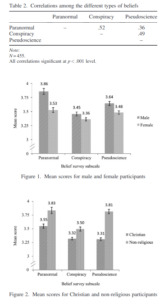Most people have had the experience of being forced to do group brainstorming in schools, and various other places. This is supposed to increase creative output, more and better ideas. Research, however, shows exactly the opposite:
- Dunnette, M. D., Campbell, J., & Jaastad, K. (1963). The effect of group participation on brainstorming effectiveness for 2 industrial samples. Journal of Applied Psychology, 47(1), 30–37. https://doi.org/10.1037/h0049218
Problems were presented for brainstorming to 48 research scientists and 48 advertising personnel employed with the Minnesota Mining and Manufacturing Co. Within a counterbalanced experimental design, each S brainstormed certain problems individually and other equated problems as a member of a 4-man team. Individuals produced not only more ideas than groups, but they accomplished this without sacrificing quality. The net superiority of individual performance over group participation is highlighted by the fact that 23 of 24 groups produced a larger number of different ideas under the individual condition. The superiority of individual brainstorming over group brainstorming was relatively greater when it was preceded by group participation. Apparently, group participation is accompanied by certain inhibitory influences even under conditions (e.g., brainstorming) which place a moratorium on all criticism.
-
Lamm, H., & Trommsdorff, G. (1973). Group versus individual performance on tasks requiring ideational proficiency (brainstorming): A review. European journal of social psychology, 3(4), 361-388.
In the experiments reviewed in this article the subjects are asked to produce ideas that are relevant to a given task request (e.g., possible consequences of a hypothetical event). After describing the specific task material and the performance measures used in the relevant research studies, some analytic background is given by outlining the cognitive resources required in this kind of experimental task and by listing the various factors that may come into play when subjects perform in groups (with discussion) instead of individually. We then review the studies comparing individual and group performance. In all of these experiments the subjects were asked to work according to the rules of brainstorming, which prescribe that participants refrain from evaluating their ideas. This procedure purportedly results in superior group, relative to individual, performance. However, the empirical evidence clearly indicates that subjects brainstorming in small groups produce fewer ideas than the same number of subjects brainstorming individually. Less clear evidence is available on measures of quality, uniqueness and variety. The discussion considers factors that may be responsible for this inferiority of groups. The role of social inhibition receives particular attention also in terms of suggestions for research. Apart from the group‐individual comparison we review the existing research concerning factors that may influence group performance on idea‐generation tasks.
-
Fern, E. F. (1982). The use of focus groups for idea generation: the effects of group size, acquaintanceship, and moderator on response quantity and quality. Journal of marketing Research, 19(1), 1-13.
Assumptions about focus group interviewing were tested. Individual interviews generated more ideas than focus groups, eight-member groups generated significantly more ideas than four-member groups, no differences were found between focus groups and unmoderated discussion groups, and the effect of acquaintanceship was not clearly determined.
- Baruah, J., & Paulus, P. B. (2008). Effects of training on idea generation in groups. Small Group Research, 39(5), 523-541.
The number of ideas generated in Session 1 was analyzed by means of 2 (training vs. no training) × 2 (group vs. nominal) between-groups ANOVA. There was a significant main effect of training condition with trained participants generating more ideas, M = 28.954, SD = 8.39, than the untrained ones, M = 21.714, SD = 7.09; F(1, 39) = 8.94, p < .005. There was also a significant main effect of group condition with nominal groups generating more ideas, M = 33.447, SD = 8.87, than interactive groups, M = 17.008, SD = 6.61; F(1, 39) = 46.10, p < .0001. There was no significant interaction effect between training and group type.
In fact, this seems to be the usual thing in science. Some early person (Alex Faickney Osborn, “American advertising executive and the author of the creativity technique named brainstorming.”) introduced a very impactful but empirically unsupported idea, and it spread like wildfire and science has never been able to reverse the general opinion on the topic despite 6 decades of research contradicting it. There aren’t even any noteworthy economic or political interests here, that one might expect would slow down the scientific correction process (cf. Cofnas 2016). One can find the occasional negative take, and even infographics to boot, but the problem, I guess, is that teachers keep teaching it. So, it’s in the same group of scientifically failed, high fitness memes like multiple intelligences, learning styles, grit, and [your favorite fad of the month].
On the positive side, the implication of this seems to be that we should encourage solo or small group scientists to try out crazy ideas, hold back on the overly negative peer review blockade, and let the scientific process work out which ideas are good and which are not. It would also seem to fit with the finding that, in general, high impact creative scientists are those who are not too easily dissuaded by others when they have a new idea. They are high in “don’t give a fuck’ness.
